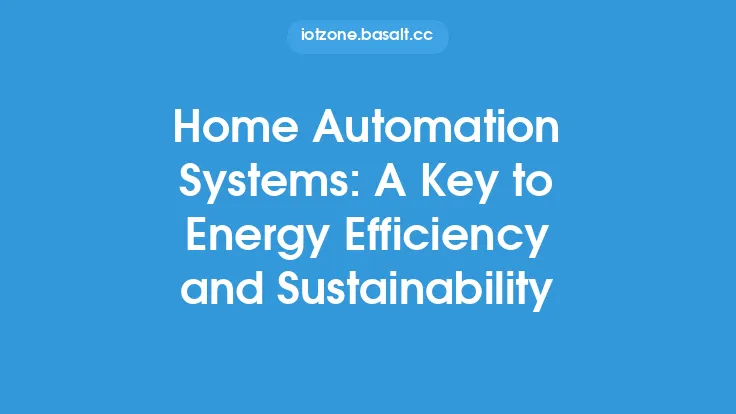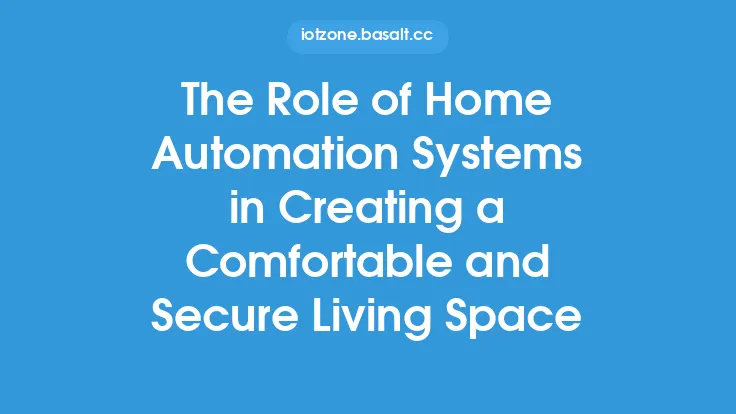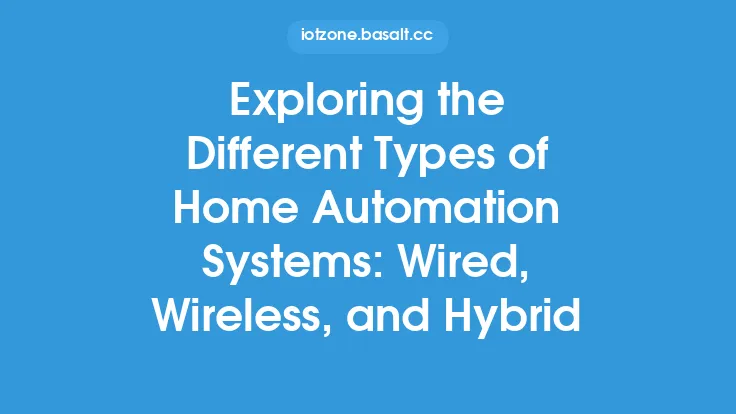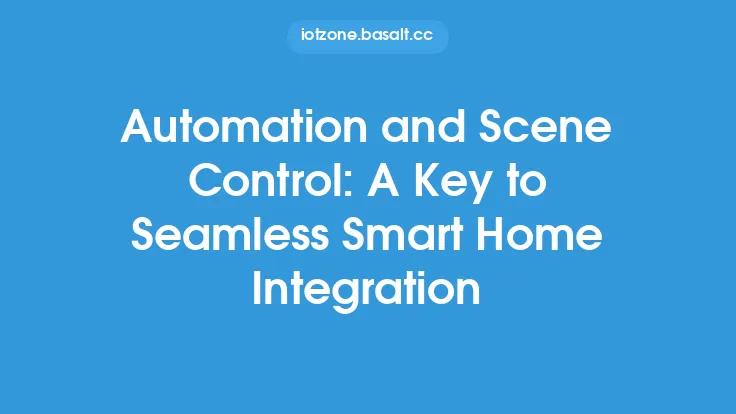Home automation systems have revolutionized the way we live, work, and interact with our living spaces. These systems enable homeowners to control and monitor various aspects of their homes, including lighting, temperature, security, and entertainment, remotely or automatically. The concept of home automation has been around for several decades, but recent advancements in technology have made it more accessible, affordable, and user-friendly. In this article, we will delve into the world of home automation systems, exploring their components, functionality, and benefits, as well as the underlying technologies that make them work.
What are Home Automation Systems?
Home automation systems are networks of devices and sensors that work together to provide a seamless and integrated control experience. These systems typically consist of a central hub or controller, which communicates with various devices and sensors throughout the home. The devices can include lighting fixtures, thermostats, security cameras, door locks, and entertainment systems, among others. The sensors, on the other hand, can detect changes in the environment, such as motion, temperature, and light levels, and send signals to the controller to trigger specific actions.
Key Components of Home Automation Systems
A typical home automation system consists of several key components, including:
- Controller or Hub: This is the brain of the system, responsible for receiving and processing signals from devices and sensors. The controller can be a dedicated device or a software application running on a computer or mobile device.
- Devices: These are the various appliances and systems that are controlled by the automation system, such as lighting, thermostats, and security cameras.
- Sensors: These detect changes in the environment and send signals to the controller to trigger specific actions.
- Communication Protocols: These are the languages that devices and sensors use to communicate with each other and the controller. Common protocols include Wi-Fi, Bluetooth, Zigbee, and Z-Wave.
- Power Supply: This provides power to the devices and sensors, which can be wired or wireless.
How Home Automation Systems Work
Home automation systems work by using a combination of hardware and software to control and monitor various aspects of the home. The process typically involves the following steps:
- Device Discovery: The controller discovers and connects to the various devices and sensors in the home.
- Signal Transmission: The devices and sensors send signals to the controller, which processes and interprets the information.
- Action Triggering: The controller triggers specific actions based on the signals received, such as turning on the lights or adjusting the temperature.
- Feedback Loop: The system provides feedback to the user, such as notifications or updates on the status of the devices and sensors.
Types of Home Automation Systems
There are several types of home automation systems, including:
- Wired Systems: These use physical cables to connect devices and sensors to the controller.
- Wireless Systems: These use wireless communication protocols, such as Wi-Fi or Zigbee, to connect devices and sensors to the controller.
- Hybrid Systems: These combine wired and wireless technologies to provide a flexible and scalable solution.
Benefits of Home Automation Systems
Home automation systems offer numerous benefits, including:
- Convenience: Home automation systems provide a convenient way to control and monitor various aspects of the home, remotely or automatically.
- Energy Efficiency: Home automation systems can help reduce energy consumption by optimizing lighting, heating, and cooling systems.
- Enhanced Security: Home automation systems can provide an additional layer of security by integrating with security cameras, door locks, and alarm systems.
- Increased Property Value: Home automation systems can increase the value of a property by providing a modern and desirable feature.
Technical Considerations
When designing and implementing a home automation system, there are several technical considerations to keep in mind, including:
- Scalability: The system should be able to accommodate additional devices and sensors as needed.
- Interoperability: The system should be able to communicate with devices and sensors from different manufacturers.
- Security: The system should provide robust security features to protect against unauthorized access and data breaches.
- Power Management: The system should be able to manage power consumption efficiently to minimize energy waste.
Conclusion
Home automation systems have the potential to revolutionize the way we live and interact with our living spaces. By providing a seamless and integrated control experience, these systems can enhance convenience, energy efficiency, and security, while also increasing property value. As technology continues to evolve, we can expect to see even more innovative and sophisticated home automation systems that integrate with other smart devices and systems to provide a truly connected and automated living experience.





